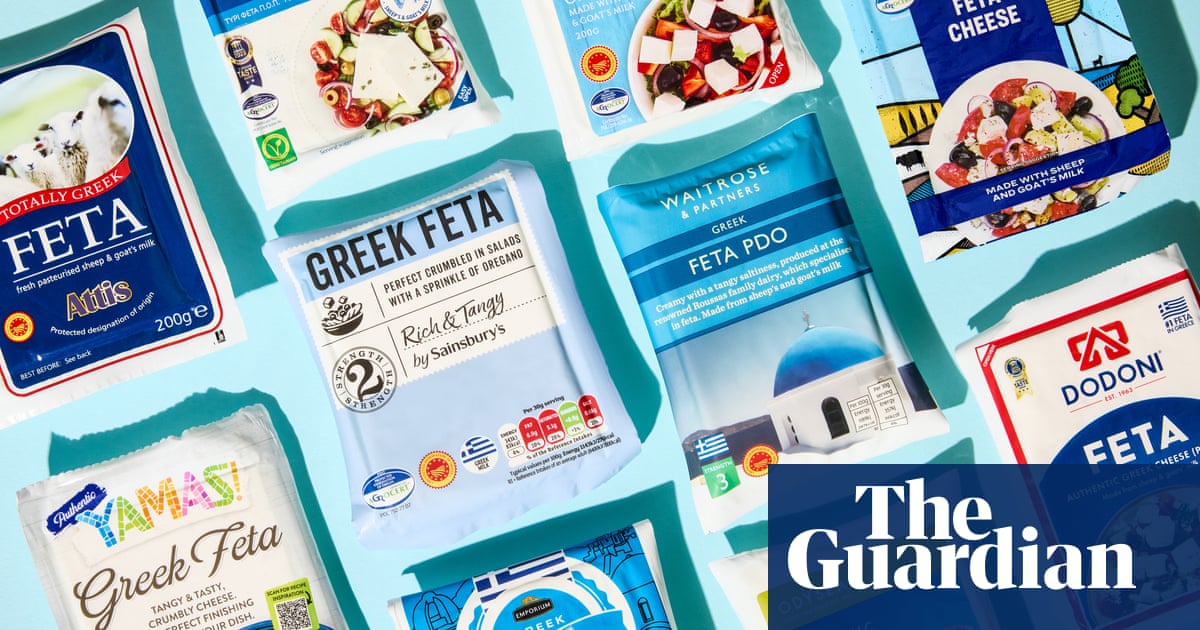While feta is often synonymous with Greek salad, you’ll find a range of uses for this brined, tangy white cheese, and a real range in finishes, too. On the whole, though, the longer the feta has been aged, the punchier its finish will be. Young cheese needs only about two to three months to mature, and can vary in anything from its saltiness to its tanginess and strength. One thing is for certain, however: if the cheese is labelled “feta”, it will have been made in Greece due to a European PDO (protected designation of origin), so you can be assured that it’s the real deal and made with sheep’s milk, or a blend of sheep and goat’s milk.
Personally, I like the salty, tangier varieties in salads, with crunchy veg or crumbled over pasta, and I save milder, creamier ones for the likes of pies, sweets and even doused in honey, wrapped in filo and fried. Try out a few brands for yourself, because the stronger ones can put people off. I stand by the statement that “everything is better with feta” – you just need to find the right one for you.
£2.69 for 200g at Bakkali£2.70 for 200g at Sainsbury’s★★★★☆
Creamy, and not too punchy or tangy. Would work well with honey or in a pudding or sweet dish – it would be perfect inmy baklava cheesecake.
£3.35 for 200g at Ocado£3 for 200g at Odysea★★★★★
The best balance of all the key feta attributes: perfectly creamy, tangy and salty, and not too punchy, either. I’d love this sliced and served simply with watermelon.
£2.09 for 200g at Bakkali★★★★☆
A good, solid feta. Creamy yet firm, and easy on the purse strings.
£1.80 for 200g at Sainsbury’s★★★★☆
I really like this. It’s surprisingly creamy, and not too intensely flavoured. It would work well in a whipped feta dip or in a pudding.
£2.69 for 200g at Aspris & Son£2.80 for 200g at Ocado★★★★☆
This firmer-textured feta is sharp and salty. Its texture and punchiness would work well in a Greek salad.
Sign up toThe Filter
Get the best shopping advice from the Filter team straight to your inbox. The Guardian’s journalism is independent. We will earn a commission if you buy something through an affiliate link.
after newsletter promotion
£2.32 for 200g at Waitrose★★★★☆
Hits a lot of the key notes, making this a good all-rounder. Tangy, salty and well balanced. Refreshing. I’d love this crumbled over pasta or baked on to apastitsio.
£2.58 for 200g at Asda£3.39 for 200g at Bodrum★★★☆☆
Nice, but pretty middle-of-the-road. Has some of the key elements of feta, but not too intense. Bit of tang. Bit salty. Pretty decent.
£2 for 150g at Tesco★★★☆☆
An OK block, but with a weirdly dry texture for something that comes in brine; it has a good tang, though. I’d probably use this if a recipe called for the feta to be baked into something, rather than in a salad.
£3 for 200g at Ocado★★★☆☆
A drier finish than some of the others, and without that creamy-yet-firm texture I’m looking for. Nice tang, though. Would probably work well in skewers or wrapped in filo and fried.
£1.69 for 200g Aldi★☆☆☆☆
Lacks flavour and all the key elements I’m looking for. This has the texture of feta, but not much else, I’m afraid.
